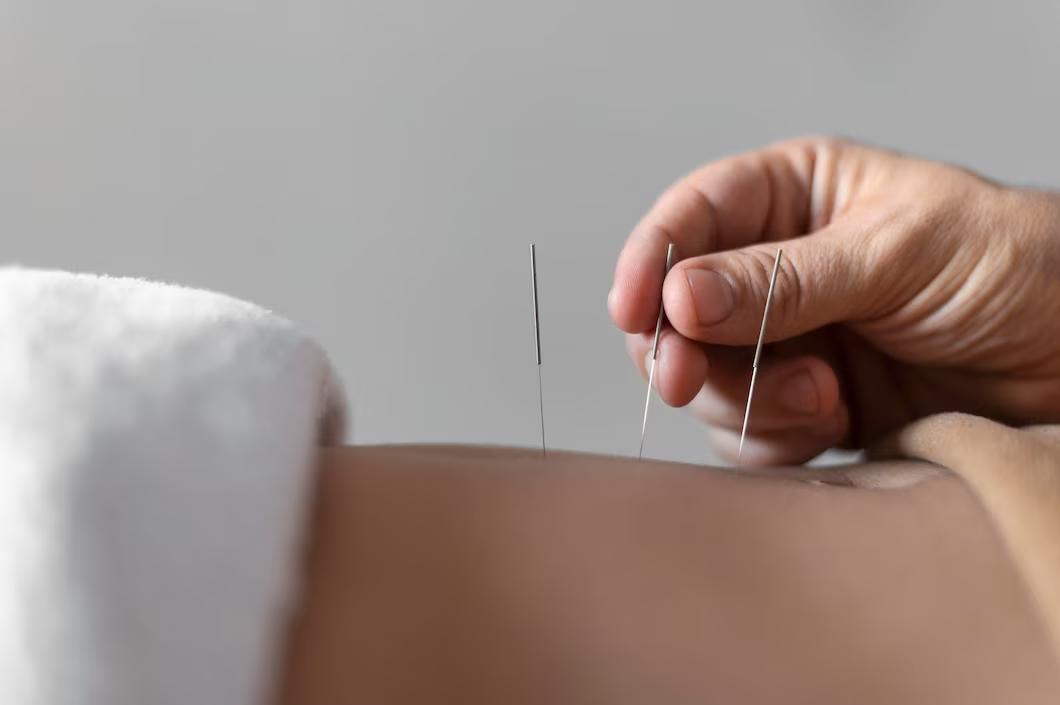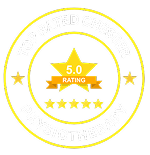Best physiotherapy in Chester | 5* Reviews | Proven experts
Understanding Dry Needling Therapy:
How It Works and Who Can Benefit

Dry needling is a modern treatment technique used by physiotherapists and healthcare professionals to relieve muscle pain and dysfunction. It involves inserting thin, sterile needles into trigger points or tight bands of muscles to alleviate pain, improve mobility, and promote healing.
Unlike acupuncture, which is rooted in traditional Chinese medicine, dry needling is based on Western medical principles and focuses on relieving musculoskeletal pain by targeting specific areas of muscle tension.
How Does Dry Needling Work?
Dry needling works by addressing muscle knots or trigger points that contribute to pain and restricted movement. When the needle is inserted into a trigger point, it stimulates a response that helps release tension and improves blood circulation. Here’s how it benefits the body:
Releasing Trigger Points: The needle causes a twitch response in the muscle, which helps it relax and reset, reducing pain and tightness.
Increasing Blood Flow: The process encourages circulation to the treated area, promoting healing and reducing inflammation.
Stimulating the Nervous System: It helps reduce nerve sensitivity, decreasing pain perception.
Improving Mobility: By reducing muscle stiffness, dry needling can restore flexibility and movement.
Who Can Benefit from Dry Needling?
Dry needling is beneficial for individuals experiencing chronic pain, sports injuries, or muscle tightness. It is commonly used for:
Athletes: To speed up recovery from sports-related injuries and muscle fatigue.
Office Workers: To relieve muscle tension caused by prolonged sitting and poor posture.
People with Chronic Pain Conditions: Such as fibromyalgia, myofascial pain syndrome, and arthritis.
Patients Recovering from Injury: To aid rehabilitation after surgery or trauma.
Individuals with Tension Headaches & Migraines: To relieve muscle tension contributing to headaches.
What Conditions Can Dry Needling Treat?
Dry needling is effective for a range of musculoskeletal conditions, including:
Neck and back pain
Shoulder pain and impingement
Tendonitis and tendinopathy
Plantar fasciitis
Sciatica and nerve pain
Postural imbalances
Joint pain and stiffness
Repetitive strain injuries
What to Expect During a Dry Needling Session
A dry needling session typically follows these steps:
Assessment: The therapist evaluates your pain points and movement limitations.
Targeting Trigger Points: Fine needles are inserted into identified trigger points in muscles.
Muscle Response: You may feel a slight twitch response or mild discomfort, which is a normal part of the process.
Post-Treatment Effects: After the session, muscles may feel sore for a short period, but improvements in pain and mobility follow.
Rehabilitation Plan: Your therapist may recommend complementary exercises or treatments for sustained relief.
Is Dry Needling Painful?
The sensation varies from person to person. While the insertion of the needle is usually painless, some patients may feel a brief muscle twitch or mild discomfort. However, most people report significant relief after treatment.
Conclusion
Dry needling is a powerful tool for reducing pain, enhancing mobility, and speeding up recovery from injuries. Whether you’re an athlete, dealing with chronic pain, or looking for relief from tension headaches, dry needling therapy may be an effective solution.
If you’re interested in trying dry needling, book an appointment with our experienced physiotherapists to see how it can help you achieve pain relief and improved movement.
The Clear Choice for Your Recovery
why choose us

Tailored to Your Needs
We understand that no two injuries are the same. That's why our expert team creates individualized treatment plans based on your specific needs, ensuring a personalized approach to recovery.

Expert Clinicians
Our highly skilled physiotherapists bring years of experience to the table. Whether it’s sports rehab or chronic pain management, our team has the expertise to help you recover efficiently.

Cutting-Edge Technology
We employ advanced diagnostic tools like ultrasound imaging and gait analysis to precisely identify problem areas and track progress throughout your recovery.

Proven Results
Our treatments lead to faster, longer-lasting recoveries, with many clients experiencing significant improvement in fewer sessions. Client success stories and testimonials reflect our commitment to quality care.
What Our Clients Are Saying
testimonials
Recognized for Excellence
Achievements













At Rebound Physiotherapy, our commitment to providing top-quality care is reflected in the numerous awards and certifications we’ve earned over the years. From industry accolades to professional certifications, these recognitions highlight our dedication to innovation, expertise, and patient success.

Meet Our Expert
Mark Boundy

After completing a Biology BSc, my journey in physiotherapy began in 2004 at King’s College, London. I spent eight years in the NHS, where I saw how long waiting lists and short appointments hindered effective rehabilitation. This led me to pursue an MSc in Manual Therapy in 2015, becoming a member of the MACP.
I moved into private practice at Oxford Sports Physio & Pilates, where I helped rehabilitate high-level athletes, including GB rowers and Oxford University sports teams. Today, I’m an expert generalist with a passion for treating a variety of musculoskeletal issues.
While I don’t specialize in one area, I have a keen interest in using MRI machine for diagnostics and injection therapy, which allows me to offer precise, effective treatments. Combined with medication prescription, I provide a comprehensive range of musculoskeletal care.
MSc, BSc (Hons), MMACP,
MSOMM
Non-medical Prescriber & Ultrasound Guided Injector
Transform Your Life with Rebound Physiotherapy
We've Helped Many,
Now It’s Your Turn!
At Rebound Physiotherapy, we’ve transformed the lives of countless clients, guiding them from pain to recovery and enhanced well-being. Now it’s your turn to experience the benefits of expert physiotherapy. Our dedicated team is here to support you on your journey to better health.
